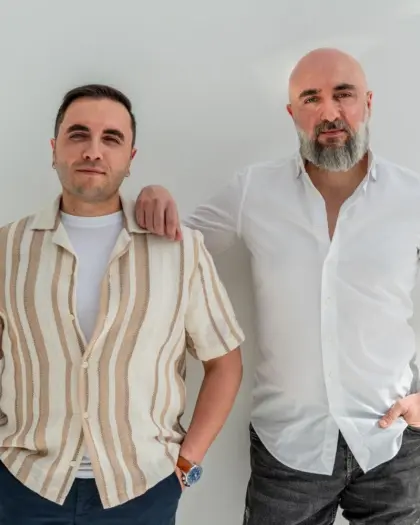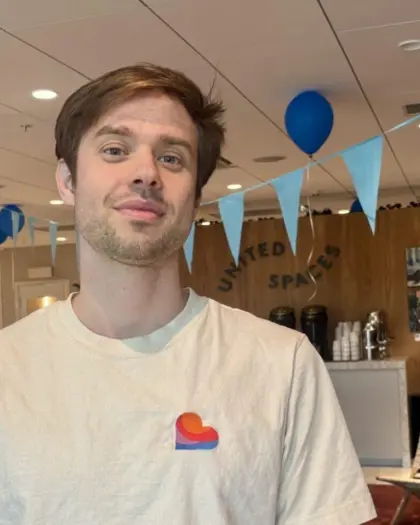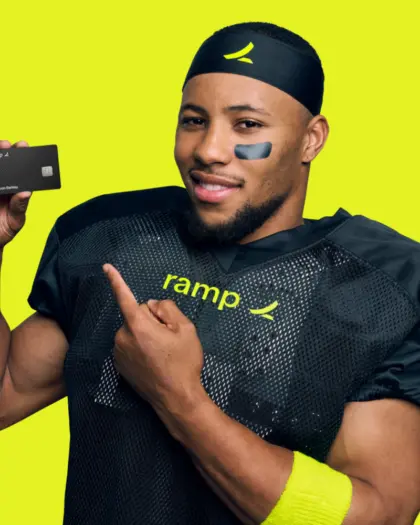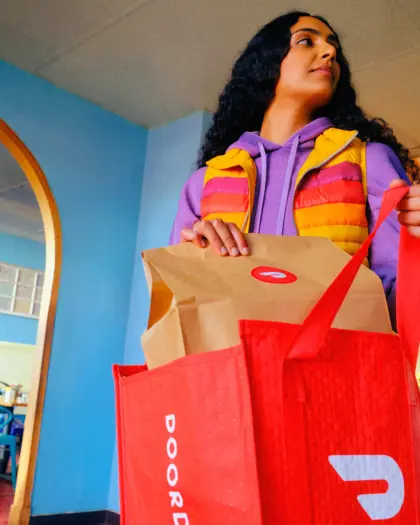Building a product that becomes a cultural phenomenon, attracting hundreds of millions of users, is the stuff of entrepreneurial dreams. Yet that’s precisely what Discord achieved. While best known as a gamer’s chat platform, Discord has since expanded into myriad communities (startups, study groups, clubs, crypto communities, AI hobbyists, you name it). In this case study, I’ll explore exactly how Discord pulled off this feat and, most importantly, how you can apply these strategies to your own tech product—whether you’re launching a social network, marketplace, messaging app, or any platform reliant on network effects.
Zeroing in on the Early Use Case, From Specific to Broad
The Power of Niches
Discord may be ubiquitous now, but it had a humble start: serving gamers, particularly those who needed slick, real-time voice and text chat for online multiplayer raids and competitions. It’s easy to think that focusing on a niche might limit your potential user base. However, if you solve a critical, highly specific problem for a tightly knit group, those people become your product’s earliest evangelists.
Discord’s founders went guild by guild, forum by forum (think: subreddits for Final Fantasy, World of Warcraft, League of Legends) to convince “raid leaders”—the supernodes who organise and orchestrate entire teams—to try Discord. By catering to each game community’s needs, they built an authentic fanbase from the ground up.
Start by solving a concrete problem for a highly engaged niche. Don’t dilute your product to target everyone. Perfect it for a smaller audience first, then allow the product’s flexibility to scale to new use cases.
Generic Functionality, Targeted Marketing
One of Discord’s cleverest strategies was building “primitives” in code—underlying features that could be adapted to many scenarios—while still speaking to each community in a bespoke way. For example, a “priority speaker” feature, initially aimed at large EVE Online fleets (where you need commanding officers to talk over others), works equally well for any group that needs a hierarchical chat structure.
Your product can remain general-purpose under the hood, but your outbound marketing should be laser-focused on specific user groups. Tailor your pitch, emphasising how your features solve their unique challenges.
Identifying and Wooing the ‘Supernode’
Who is a Supernode?
In any group of humans—whether you’re talking about gamers, business professionals, or social circles—there’s always that one person who organises everything. In gaming, it’s the raid leader; in real life, it might be the office manager, the community organiser, or the friend who’s forever planning parties and getaways.
Discord’s early strategy revolved around winning over these supernodes first. Why? Because they bring their entire group or guild with them. If the ringleader moves to Discord, everyone else will follow, even if they rarely touch the “complicated” features themselves.
Focus on the person who corrals everyone else. Build or highlight a feature set that makes their life infinitely simpler—then let them bring the masses to you.
Turning Influencers into Partners
Early on, Discord built a partnership programme for Twitch streamers and YouTubers. For small- to medium-sized streamers, Discord offered special perks, extra features, and even the odd bit of merchandise (like a coveted “Discord partner” hoodie). In return, streamers linked to a Discord server on their streams, giving them and their audience a place to hang out, chat, and bond.
At scale, Discord formalised deals with top influencers—some were paid partnerships, others were simply about building relationships and providing them with premium support. The genius? Each influencer had an audience of potential new Discord users.
Identify influencers (big or small) who can bring your exact target user base to your product. Sweeten the deal with perks, custom features, or brand co-promotion, ensuring both parties benefit.
Hype, Events, and the Human Touch (Grassroots Marketing)
The Hype Squad Programme
One of the most ingenious moves was launching something called the “Hype Squad.” Discord fans could apply to become official brand ambassadors at their school, university, or local gaming event. On approval, they received a swag kit—think T-shirts, stickers, banners, and a modest budget to host small tournaments or “LAN parties.” This effectively turned college dorms and high school clubs into mini marketing hubs.
While it might sound delightfully scrappy, it was also strategic: local advocates were creating offline events that would funnel players onto Discord. Those hosting events felt proud to wear the official partner or hype gear; their enthusiasm was contagious.
Community ambassador programmes can be an incredible low-cost strategy for growth. Give your biggest enthusiasts the gear and support to organise local events, forging genuine grassroots evangelism.
Convention Presence
Discord also invested resources into being present at major gaming conventions—PAX East/West, TwitchCon, Comic-Con, and the like. With an official booth, they’d invite local Hype Squad members to drop by, orchestrating a feel-good “hang out with the Discord team” moment.
A well-run events strategy extends your brand’s presence from online to offline. Focus on fans and ambassadors who can spread the word authentically, both digitally and in person.
Building a Frictionless User Experience
‘One-Click’ Onboarding
A hallmark of Discord is its near-instant onboarding. You receive an invite link, click it, pop in a username, and you’re in voice or text chat within seconds. This seamless experience was crucial for gamers in between matches—nobody wants to mess about with complicated installs when your countdown clock is at 40 seconds.
Don’t underestimate user experience. People might only have a few seconds to decide whether to adopt your product. Make sign-up as frictionless as possible, or risk losing them.
Iterating on New Features
When Discord spotted people hacking together screen sharing via Skype or Twitch (e.g., “Open Twitch, mute it, talk on Discord”), they realised they could build “Go Live”—a low-latency, integrated screen share right in a voice channel. This built upon existing user behaviour, turning a complex multi-app workflow into one simple feature.
Pay close attention to how users are bending or hacking your platform. Often, it reveals a gaping need you can fill. When you address real user pain points, your new features practically market themselves.
Capitalising on Unpredictable Waves
Yearly Phenomena: Pokémon Go to Midjourney
A particularly fascinating part of Discord’s growth is how each year seemed to bring an unexpected trend that supercharged new user influx:
- Pokémon Go: Communities popped up for local “raids,” using Discord to coordinate real-life meetups and share sightings of rare Pokémon.
- Midjourney: An AI image generator that used Discord’s server and bot integration to let users collaborate, riff on prompts, and create art together.
Crucially, Discord didn’t rush to build brand-new solutions for each wave. Instead, they leaned on the platform’s existing “primitives” (bots, slash commands, voice chat, roles, etc.) which were flexible enough to handle just about any new scenario.
Remain adaptable and open. You can’t possibly predict every new wave that might bring users your way. What you can do is design core features to be broad and extensible, so you’re always ready to harness fresh phenomena.
Building a Sustainable Business Model
From Game Store Aspirations to Nitro
Discord initially thought it might become a Steam-like game store, given that millions of gamers were congregating on the platform. But consumers were too attached to existing libraries—on Steam, Epic, or elsewhere. The store never reached “10x better” status, so Discord pivoted.
That pivot turned into Nitro: a premium subscription granting users special perks. In the early days, Nitro was just a “buy button” for superfans who loved Discord and wanted to donate. Yet with time, it became a robust programme offering:
- Higher-resolution streaming for you and your friends
- Custom emojis and animated profile pictures
- Larger file uploads
- Server boosting (co-funding improvements to the servers you hang out in)
Building a successful monetisation model means understanding what your community values enough to pay for. In Discord’s case, it was personal identity, customisation, and high-quality experiences with friends.
Community Co-Funding Through Server Boosts
Server boosting epitomises Discord’s approach to monetisation. When friends hang out every day, they want to “decorate” their shared space. By collectively chipping in to unlock unique banners, emoticons, or better quality voice channels, they develop a sense of collective ownership.
If your product involves group collaboration or shared spaces, consider ways to let users upgrade the “clubhouse” together. This fosters loyalty and a greater emotional investment in the product’s success.
The Developer Ecosystem (Bots and Beyond)
APIs and Community-Driven Innovation
From the outset, Discord exposed a robust API, letting anyone build bots and integrate them into servers. This gave rise to innumerable custom features and expansions—from music streaming to advanced moderation tools—without Discord needing to build them in-house.
Opening up your platform to third-party developers can unleash an explosion of creativity and functionality. It also relieves pressure on your internal team to build everything.
Supporting Bots at Scale
When certain bots, like the Midjourney AI image generator, skyrocketed in popularity, Discord had to invest in infrastructure to allow servers to surpass a million members. This was no trivial feat, but by supporting these breakout hits, Discord further cemented itself as the go-to community platform.
If your platform fosters a third-party developer ecosystem, be prepared to invest in them. Their success is your success.
The ‘Crypto Dilemma’ - Handling Challenging Community Waves
It’s not all sunshine and roses. Crypto communities, with their incentives for “active engagement,” ended up spamming invites or forcibly “levelling up” in servers to receive perks. Discord had to walk a tightrope: removing spammers while not alienating legitimate users who also happened to game. It’s an ongoing battle, reminding us that as we scale, new user behaviours can complicate your moderation policies.
Growth often comes with friction—spam, bots, fraudulent activity. Lay robust groundwork for moderation, so you can pivot quickly when a wave of new (and sometimes problematic) behaviour arrives.
Steal Discord's Marketing Strategy To Grow Your Tech Company
- Laser-Focus on a Core Audience: Don’t spread yourself too thin. Identify a niche with a burning problem; solve it better than anyone else. Let that community champion your product.
- Woo the Supernodes: Identify the leaders who can bring everyone else on board. Provide them with the advanced features that make organising a breeze.
- Deploy Layered Marketing Approaches:
- Grassroots Programmes (like Hype Squad): Empower local ambassadors to host events, share swag, and foster loyalty.
- Influencer Partnerships: Offer custom perks or small payments to mid-level influencers, reserve bigger deals for top-tier creators.
- Online & Offline Harmony: Appear at events that matter to your audience, encouraging face-to-face connections that bolster online communities.
- Make Onboarding Instant: People have fleeting attention spans. If it takes more than a minute to start using your product, you risk losing them.
- Watch Your Users for the Next Feature: Understand how they’re hacking your product. If they’re cobbling together a workaround, build that into your product so it’s seamless.
- Be Ready for ‘Lucky’ Breaks: You can’t plan for next year’s Pokémon Go or midjourney phenomenon. But you can ensure your tech stack is flexible enough to accommodate, even encourage, spontaneous new user behaviours.
- Monetise around Identity & Community: Beyond donations, subscriptions or one-off purchases can thrive if they enhance how users express themselves or upgrade the environment they share with friends.
- Open Your Platform to Developers: Third-party integrations, community-made bots, or an app store can empower super-fans to innovate in ways you’d never dreamt. Reward these creators with support and recognition.
- Stay Vigilant with Moderation: More users mean more potential for spam and abuse. Aim for balanced moderation that doesn’t alienate genuine community members.
In Closing
Discord’s story is a masterclass in growing a platform with network effects: they started small, catered to a passionate niche, and then carefully layered new marketing strategies—community programmes, influencer partnerships, custom product enhancements—year after year. Along the way, they stayed attuned to user behaviour, building features that solved real problems or capitalised on emerging trends.
Community-driven marketing is the ultimate flywheel. Identify who your early adopters are, solve their most pressing problems in a frictionless way, make it delightful, and then give them the tools to do your marketing for you. Over time, as your community expands, remain flexible, keep an eye on new waves, and deepen your product in ways that reward engagement and loyalty.
Whether you’re building the next marketplace, a new social platform, or the next great messaging app, the Discord playbook is well worth emulating. Let it inspire you to remain laser-focused on the human connections at the heart of your product, and ultimately, to create a community that scales from niche obsession to widespread cultural adoption.
About the Author
I’m a British founder and entrepreneur who’s spent years deep in the trenches of tech product development and growth marketing. I’ve built and scaled multiple tech ventures, consulted for leading consumer platforms, and studied the most successful community-driven products out there. This is my take on Discord’s phenomenal growth, derived from my research, firsthand experience with tech companies, and a passion for dissecting what makes the best tech products tick. If you’re building something with network effects, I hope this case study inspires your own bold moves.












































